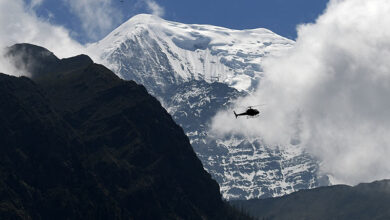
Afghan Evacuation Plan: US Is Set To Use Post-WW II Airlift Programme For 3rd Time In History
[ad_1]
New Delhi: The US military is “executing a plan” to move American citizens stranded in Afghanistan to the Kabul airport in greater numbers, President Joe Biden announced Sunday.
The plan includes the expansion of a safe zone around the Kabul airport, and conduits would be created so people can access the compound “safely and effectively”.
“Our first priority in Kabul is getting American citizens out of the country as quickly and as safely as possible,” Biden said at the White House.
The US administration has, meanwhile, said the Civil Reserve Air Fleet (CRAF) — a programme created during the early Cold War period after World War II — would now help in the Afghanistan evacuation effort.
Secretary of Defense Lloyd J. Austin III has ordered the Commander of the US Transportation Command to activate Stage I of the CRAF, the Department of Defense said in a statement.
The programme involves coordination between the country’s transportation department, the defense department, and the commercial airline industry, as it aims to increase air-carrying capacity during a national defense crisis.
The activation of CRAF provides the defense department with access to the commercial air mobility resources to “augment our support to the Department of State in the evacuation of U.S. citizens and personnel, Special Immigrant Visa applicants, and other at-risk individuals from Afghanistan”, the statement read.
In the history of the post-World War II programme, this is only the third time that CRAF has been activated. It was first used during the Gulf War (August 1990 to May 1991) to help in the Operations Desert Shield/Storm. The second occasion was Operation Iraqi Freedom (Feb. 2002 to June 2003).
What Is Civil Reserve Air Fleet?
At the height of the Cold War, when West Berlin was occupied by France, Britain and the United States, the Soviet Union was trying to gain control of Berlin by cutting ground traffic.
The US, along with its allies, then planned the famous Berlin Airlift, a massive humanitarian aid operation, as they decided to send food and supplies into the German city.
The American commercial planes were roped in for the supplies that eventually helped sustain more than 2 million people in West Berlin for nearly a year, according to a report in The Washington Post.
It was after this operation that the US administration realised there was a need for such an airlifts mechanism in place to support future defence emergencies. And that’s how the CRAF came into being on December 15, 1951.
CRAF has been successful and efficient, and is a highly “structured and regimented” programme, according to Alan Stolzer, dean of the College of Aviation at Embry-Riddle Aeronautical University in Florida.
“It’s a vital program; it does supplement what the military is capable of doing,” he told The Washington Post in an interview. “It is only infrequently that the military needs that lift capability, so it makes sense that they would rely on commercial lines.”
Under the programme, commercial airlines are compelled to volunteer their planes through “contractual agreements” with the government. They get preference in carrying commercial cargo and passenger traffic for the government, the transportation department says on its website.
According to a Pentagon news release, while the US Transportation Command leads the mission, the commercial carriers operating under the CRAF retain their civilian status.
The CRAF programme is activated under the Defense Production Act of 1950.
How CRAF Will Be Used In Afghanistan
The voluntary programme will use 18 commercial airplanes in the Afghanistan evacuation mission, the defence department said.
Of the 18 aircraft, three each are from American Airlines, Atlas Air, Delta Air Lines and Omni Air, while two are from Hawaiian Airlines and four from United Airlines. The department said no major impact to commercial flights is likely.
These aircraft won’t fly into the Hamid Karzai International Airport in Kabul. “They will be used for the onward movement of passengers from temporary safe havens and interim staging bases. Activating CRAF increases passenger movement beyond organic capability and allows military aircraft to focus on operations in and out of Kabul,” the department said.
In separate statements, United Airlines and Delta Air have confirmed participation.
Stating that they “embrace the responsibility”, the United Airlines said it would “use our expertise to ensure the safe passage of our fellow countrymen and women as well as those who have risked their lives to help keep them safe”.
Delta said the company “is scheduled to have multiple relief flights arriving back in the United States beginning Monday morning”.
Source link


